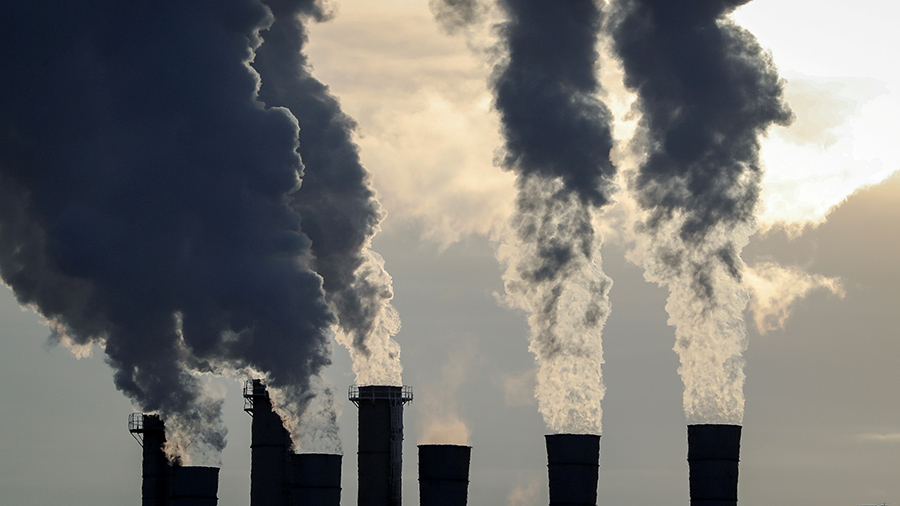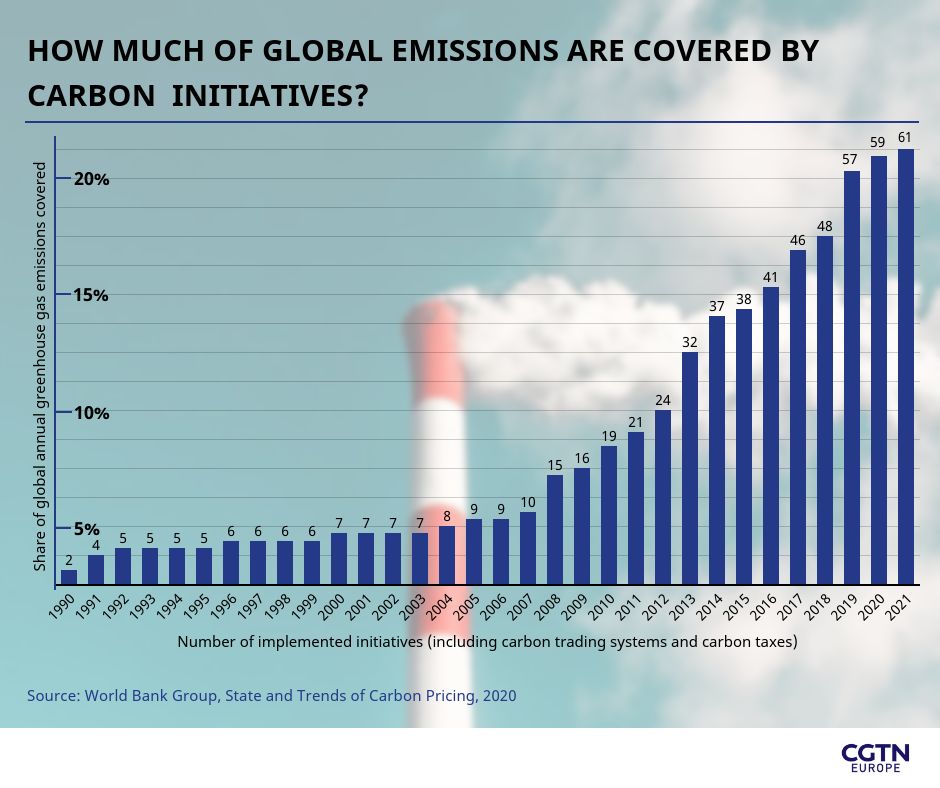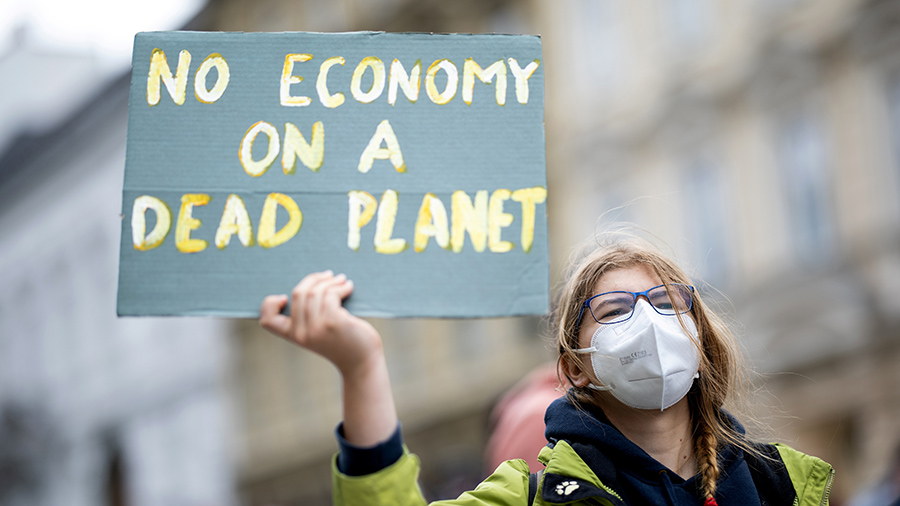The UK is about to launch its own carbon trading system, with a first auction of permits on May 19. It replaces the European Union Emissions Trading System (ETS), the world's first and biggest carbon trading market, of which the country had been part until leaving the bloc.
The scheme is part of the UK efforts to reduce greenhouse gas emissions and become a net-zero economy by 2050.

Carbon trading puts a price on a country or company's carbon emissions to encourage a reduction in greenhouse gases. /Reuters/Shamil Zhumatov/File
Carbon trading puts a price on a country or company's carbon emissions to encourage a reduction in greenhouse gases. /Reuters/Shamil Zhumatov/File
What is carbon trading?
Carbon trading is a market-based system that allows companies and governments to buy and sell permits and credits to emit carbon dioxide into the atmosphere.
It emerged as a direct result of the 1997 Kyoto Protocol calling for a united front to reduce pollutant emissions, carbon trading is technically a market practice that punishes big polluters and rewards those who cut back on emissions.
The most commonly used and considered most efficient carbon trading model is the so-called "cap and trade" scheme. It sets an overall limit or "cap" on the amount of greenhouse gas emissions, which industries and companies have to respect.
Though issues of corruption and a set of different issues have emerged in connection with the system, carbon trading is a measure increasingly being adopted to slow down the rates of emission.

How does it work?
Almost all carbon trading schemes use the "cap and trade" principle mentioned above.
In such as scheme, governments usually set a legal limit on emissions over a specific period of time and give away a number of emissions allowances to those companies responsible for CO2 emissions, either free or auctioned.
One permit equals about one ton of CO2 equivalent released into the atmosphere. At the moment in the EU, prices are around 56 euros ($68) a ton. The UK, unlike the EU, has set a legal minimum price of 22 pounds ($31) a ton.
Technically, if a company "spends" all its available credits but still emits more CO2 than its permits can cover, the company will be forced to buy carbon credits from a less-polluting company to cover its exceeding emissions, or pay a heavy fine.
Companies that save up their allowances can keep them to cover future needs or sell them to companies that are running short of them.
This system puts a price on emissions – something that should encourage companies to become greener and represents an incentive for those companies that, by reducing their emissions, are able to sell their credits to big polluters and make a profit out of it.

Despite controversies around carbon trading, there's no sizable alternative to this system currently available. /Reuters/Lisi Niesner
Despite controversies around carbon trading, there's no sizable alternative to this system currently available. /Reuters/Lisi Niesner
How big is it and who's involved?
In a 2020 report the World Bank said there were 31 Emissions Trading Schemes and 30 carbon taxes operating globally, covering 22 percent of the world's greenhouse gas emissions. That's up from just two in 1990, when Finland and Poland introduced carbon taxes.
The world's first international carbon trading system was the EU ETS, set up in 2005. It involves more than 10,000 companies from all EU member states plus Norway, Liechtenstein and Iceland and covers around 40 percent of the EU's greenhouse gas emissions.
On a national level, carbon trading systems are also operating in countries including China, Japan, the U.S., Canada, New Zealand, South Korea and Switzerland.
Collaboration between countries for bilateral agreement on international carbon trading schemes are also under way, as between the EU and China.
What are the benefits?
Carbon trading systems bring positive results. According to data from the European Commission, companies under the EU ETS reduced emissions by about 35 percent between 2005 and 2019.
For governments, cap and trade schemes are now the go-to policy to decrease carbon dioxide emissions, whereas the idea of imposing a carbon tax proves much less popular among businesses.
What's the criticism?
Despite its successful results, carbon trading remains somewhat controversial.
According to critics of the system, carbon trading is just a distraction and a delay from the real, drastic action needed to tackle the climate crisis: radically cutting emissions through structural changes that will move the world towards a low-carbon economy.
How will the UK's carbon trading system work?
The UK's carbon trading scheme will operate for around 1,000 power plants, factories and airlines, which collectively cover about a third of the country's emissions.
These companies will be able to purchase up to 83 million permits that will be auctioned by the UK government on May 19, which experts predict might reach prices higher than the ones under the EU ETS.
Power plants in Northern Ireland will remain under the EU ETS and the possibility of linking the UK's carbon trading system with the EU ETS in the future remains on the table.

